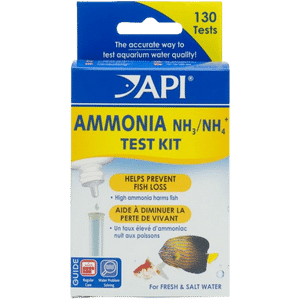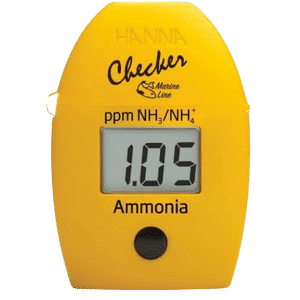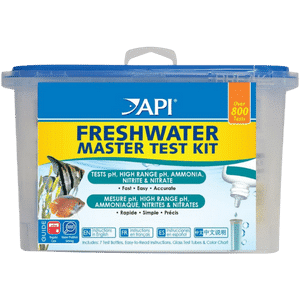The Best Ammonia Tester For Fish Tank
An ammonia tester for fish tank is a must-have for every aquarist!
Every dedicated fish owner knows that a pristine water environment is the backbone of a thriving aquarium, and at the heart of this is the need to monitor ammonia levels meticulously.

Over the years, ammonia testers have evolved significantly, becoming more accurate, user-friendly, and reliable. With many options in the market, choosing the right ammonia tester for fish tank care becomes paramount.
This blog post delves deep into everything you need to know about ammonia testers, ensuring that you make an informed decision for the well-being of your finned friends.
Table of Contents 🦑
Searching for a Top-Quality Ammonia Tester For Your Fish Tank?
Welcome to our blog, where we reveal the top Ammonia Tester picks for every aquarium size – from compact options for small setups to robust choices for larger tanks.
With nearly 3 decades of experience in Betta Care and the aquarium hobby, I’ve guided countless clients, fellow hobbyists, and readers like you toward high-quality, effective equipment.
Rest assured, each product recommended here has been personally tested by me in real-life situations. My goal? To help you identify the Best and most reliable Ammonia testing kit available, ensure your Betta fish thrives.
Understanding Ammonia in Aquariums
Ammonia, scientifically represented as NH₃, is a colorless gas that readily dissolves in water.
In an aquarium, ammonia primarily byproduct from the breakdown of organic materials, including fish waste, leftover food, solid waste, and decaying organic matter, fish continually release ammonia.
Beneficial bacteria in the tank usually convert ammonia into less harmful substances, but certain conditions can disrupt this balance, leading to an ammonia spike.
High ammonia levels severely threaten all aquatic life, but bettas, given their particular needs, can be especially vulnerable.
When exposed to elevated ammonia levels, fish suffer from reduced oxygen uptake, leading to breathing difficulties. It can also damage their gills, making it even harder for them to extract the necessary oxygen from the water.
Over time, chronic exposure to high ammonia concentrations can lead to weakened immunity, making bettas more susceptible to diseases. In extreme cases, it can even be fatal. Therefore, understanding and monitoring ammonia is crucial for every aquarist keen on ensuring a safe environment for their beloved betta fish and other tank inhabitants.
Why Ammonia Testing is Critical?
One of the cornerstones of maintaining a thriving aquarium is ensuring a healthy water composition.
Among various parameters, ammonia stands out due to its potential to wreak havoc if left unchecked. The direct impact of high ammonia concentrations on fish health can be dire. It compromises their respiratory system, impedes normal growth, and even shortens their lifespan. For bettas, especially, whose labyrinth organ enables them to breathe atmospheric oxygen, ammonia-laden water can cause gill inflammation, hampering their ability to breathe efficiently.
Beyond individual fish health, the overall tank environment can be destabilized by ammonia spikes. Beneficial bacteria populations may decline, causing disruptions in the nitrogen cycle, which, in turn, affects other essential water parameters.
But how can you tell if ammonia levels are rising? While some signs might hint at an issue, such as fish gasping for air at the surface, lethargy, loss of appetite, or red, inflamed gills, relying solely on these physical cues can be risky. These symptoms may appear only after ammonia levels have reached dangerous concentrations.
Hence, regular testing with a reliable ammonia tester for fish tanks is not just recommended, it’s a necessity. Being proactive rather than reactive can be the key difference between a flourishing tank and a potential disaster.
The Best Types of Ammonia Testers for a Fish Tank
In the quest for maintaining pristine water quality, selecting the right tool for the job is paramount.
With various ammonia tester types in the market, understanding the differences can greatly aid in making an informed decision. Let’s delve into the three main categories:
Liquid Ammonia Testers
Liquid Ammonia Testers, These involve adding a reagent to a water sample from your tank. The resulting color change, if any, indicates the concentration of ammonia.
- Pros: Liquid tests are renowned for their accuracy and precision. They can detect minute levels of ammonia, making them an excellent choice for discerning aquarists.
- Cons: They can be more time-consuming and might require careful handling and interpretation of results. Plus, there’s the risk of cross-contamination if not used correctly.
Ammonia Test Strips
These are ready-to-use strips that you dip directly into your aquarium. After a brief wait, the strip will change color based on the ammonia concentration, which can then be compared to a provided color chart.
- Pros: Test strips are convenient, quick, and user-friendly, especially for beginners or those looking for a quick check.
- Cons: They may not offer the same level of accuracy as liquid tests. They can also have a shorter shelf life once the container is opened.
Digital Ammonia Testers
These electronic devices require a water sample. They analyze the sample and provide a digital reading of the ammonia concentration.
- Pros: Digital testers eliminate the guesswork of color comparison, offering exact readings. They’re efficient and provide instantaneous results.
- Cons: They tend to be more expensive than their manual counterparts. Additionally, they require batteries or a power source and periodic calibration for accuracy.
In the end, your choice of an ammonia test kit will depend on your preferences, budget, and the level of precision you seek. Whether you opt for the traditional liquid tests, the convenience of test strips, or the technological prowess of digital testers, ensuring regular use is the key to a thriving aquatic environment.
4 Key Features to Consider Before Purchasing an Ammonia Tester
When diving into the vast world of aquarium maintenance, ensuring the safety and health of your aquatic pets remains paramount. This is especially true when it comes to monitoring ammonia levels, a critical factor in maintaining a thriving tank environment.
To assist in this endeavor, an efficient ammonia tester becomes an indispensable tool. Here are the key features to look out for when choosing the best ammonia tester for your fish tank:
- Accuracy and Reliability: The foremost consideration should be the tester’s ability to provide precise and consistent results. False readings can jeopardize the well-being of your aquatic life.
- Ease of Use: The testing process should be straightforward, without the need for cumbersome procedures. Whether you’re a seasoned or a new aquarium enthusiast, a user-friendly interface and design make for a hassle-free experience.
- Cost vs. Longevity: While affordability is essential, it’s crucial to ensure the tester offers durability and long-term utility. Investing in a high-quality tester might save more in the long run, preventing frequent replacements.
- Additional Functionalities or Benefits: Some testers come with extra features, such as multi-parameter testing capabilities (like checking for pH, nitrites, or nitrates alongside ammonia) or digital memory functionalities. These can provide added convenience, especially for those aiming for comprehensive aquarium care.
Effective Tips for Testing Ammonia Levels
A healthy and thriving aquarium requires diligent maintenance and monitoring. Among the myriad factors to keep an eye on, ammonia levels stand out due to their potential impact on fish health.
To ensure your tank inhabitants remain safe and the environment optimal, here are some effective tips for accurately testing ammonia levels:
- Best Times to Test: It’s generally advised to test for ammonia during the late afternoon or early evening. This is because fish tend to be more active during the day, leading to a gradual build-up of waste and, consequently, ammonia. Testing during these periods offers a more representative reading of daily peak levels.
- Frequency of Testing: For a newly set-up tank, daily testing is crucial for the first 6-8 weeks as the nitrogen cycle establishes. For established tanks, testing once a week is usually sufficient. However, after any significant change – like introducing new fish, replacing a large volume of water, or if you suspect any health issues with your fish – increase the frequency.
- How to Ensure Accurate Readings:
- Shake Well: Whether you’re using a liquid test or test strips, always shake them well before use. Some chemicals might settle, and shaking ensures a uniform distribution.
- Avoid Contamination: Always use a clean container or vial for testing. Residual chemicals from previous tests can skew the results.
- Follow Instructions: Each brand or type of ammonia testing solution may have specific guidelines. Adhere to these instructions for accurate readings.
- Check Expiry: Outdated testing solutions or strips might not provide accurate results. Regularly check their expiry dates and replace them as necessary.
- Read in Natural Light: For visual tests, evaluate the color changes under natural light. Artificial lighting can sometimes misrepresent the colors, leading to incorrect readings.
- Shake Well: Whether you’re using a liquid test or test strips, always shake them well before use. Some chemicals might settle, and shaking ensures a uniform distribution.
Armed with these tips, you can ensure that your ammonia testing efforts are precise, providing the best environment for your fish to flourish.
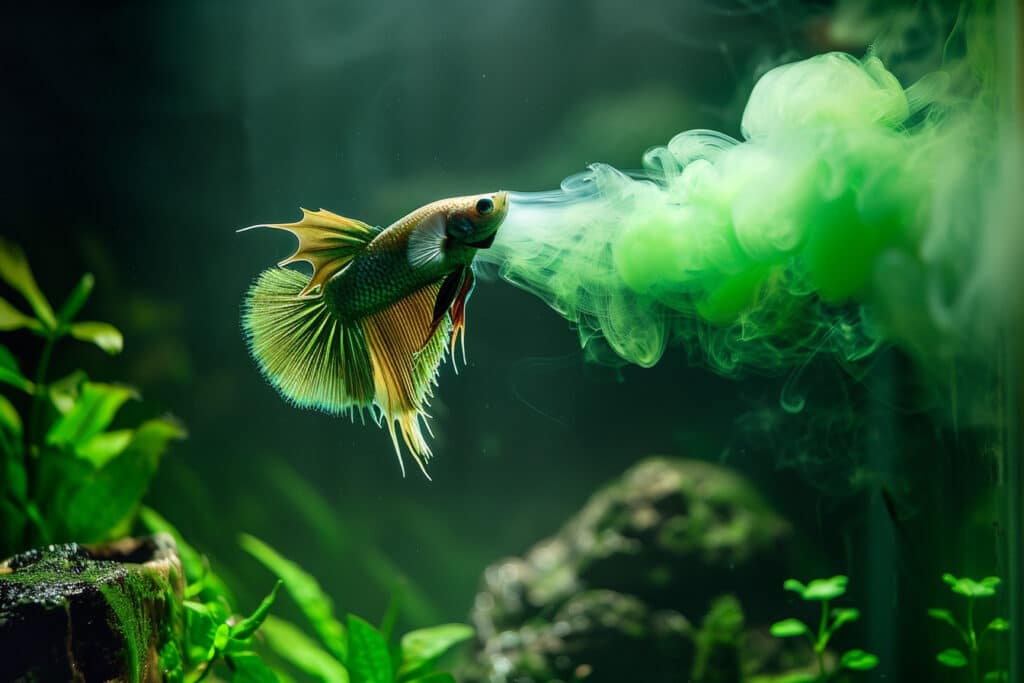
How To Manage Ammonia in a Fish Tank?
Detecting elevated ammonia levels in your aquarium can be concerning, but with swift and appropriate action, you can rectify the situation and protect the health of your aquatic inhabitants. Let’s delve into the necessary steps and products you can employ to address and mitigate these spikes.
- Immediate Water Change: As soon as you detect a spike, perform a 50% water change. Use dechlorinated water that’s been matched to the temperature of your tank. This can quickly reduce the ammonia concentration, providing immediate relief to your fish.
- Review Your Feeding Routine: Overfeeding is a common cause of ammonia spikes. Uneaten food decomposes and releases ammonia. Ensure you’re feeding the correct amounts and consider reducing feeding temporarily.
- Check Filtration System: A malfunctioning or clogged filter won’t efficiently process waste. Ensure your filter is working correctly and clean it if necessary. Do not replace the filter media during this time, as it contains beneficial bacteria.
- Use Ammonia Neutralizing Products: There are several products on the market, like Seachem Prime or API ammonia test kit Ammo-Lock, that can temporarily neutralize ammonia, making it non-toxic. While these are not long-term solutions, they can provide immediate relief while you address the root cause of the spike.
- Add Beneficial Bacteria: Commercially available beneficial bacteria preparations can be added to the aquarium. These bacteria can help process ammonia more rapidly, aiding in restoring the nitrogen cycle.
- Reduce Stocking: If your tank is overstocked, it may produce more waste than your filter can handle. Consider rehoming some fish or upgrading to a larger tank.
- Increase Aeration: Higher oxygen levels can help fish cope with mild ammonia exposure. Increase aeration using air stones or adjust your filter output for more surface agitation.
- Utilize Natural Solutions: Live plants can absorb some amount of ammonia. Fast-growing plants like hornwort or duckweed can be especially effective during spikes.
- Regular Monitoring: After taking corrective measures, test the ammonia levels daily until they stabilize at safe levels.
Ammonia spikes can be daunting, but with the right products and strategies, they’re entirely manageable. Regular monitoring and maintenance are your best defenses against these potentially harmful surges.
FAQ's About Ammonia In Fish Tank
Q: What is a safe ammonia level in a fish tank?
A: Ideally, the safest ammonia level in a fish tank is zero. Fish can start to experience stress and health issues at even low concentrations of ammonia. While some very hardy species may tolerate slight traces temporarily, it’s crucial for the health of all your aquatic life to maintain ammonia levels as close to zero as possible. Regular testing and maintenance are key to achieving and keeping ammonia levels safe for your fish.
Q: How do I choose the best ammonia tester for my fish tank?
A: Consider what’s most important to you—speed, accuracy, cost, or convenience. If you’re new to fishkeeping, a simple test strip might be a good start. For those looking for precision, a liquid test kit is excellent. And if you love tech and want real-time info, an electronic monitor could be your best bet.
Q: What should I do if the ammonia levels in my tank are too high?
A: First, don’t panic. Perform a water change—about 25-50%—and retest. You might also need to check your tank’s filtration system to ensure it’s working correctly. Repeat the water changes daily until the ammonia levels drop.
Q: Can I prevent ammonia spikes in my fish tank?
A: Absolutely! Regular maintenance, including frequent water changes, cleaning the substrate, and avoiding overfeeding, can significantly reduce the risk of ammonia spikes. Also, ensure your tank isn’t overcrowded and that your filtration system is adequate for your aquarium size.
Q: How often should I test my fish tank for ammonia?
A: It’s best to test your tank once a week to keep on top of ammonia levels. If you’ve just set up a new aquarium, are introducing new fish, or notice signs of stress in your fish, increase testing to daily or every other day until levels stabilize.
Conclusion Ammonia Tester for Fish Tank
Ammonia testing isn’t just a routine aquarium chore—it’s a critical line of defense in ensuring the health and vitality of your aquatic pets in both freshwater and saltwater aquariums.
By maintaining a vigilant eye on ammonia levels, you can preemptively adjust ammonia levels and address issues, staving off potential disasters that could endanger the lives of your beloved fish.
The choice of an ammonia tester, whether you use test tubes or other methods, is paramount. A reliable and accurate tester doesn’t just offer peace of mind, it provides actionable data that can be the difference between a thriving aquarium and one fraught with problems. Especially for our dear bettas, who, like all fish, are sensitive to their environment, a minute change can have ripple effects.
To all our passionate aquarists and betta enthusiasts, we urge you to consider ammonia testing as an investment. An investment in the health of your fish, the stability of their environment, and the peace of mind that comes with knowing you’re providing the best care possible.
Equip yourself with the tools necessary to ensure your aquarium remains a safe haven for its inhabitants. Your fish, after all, depends on you.

Delighted to have you here at BettaReef! This place is a treasure trove of knowledge about Betta fish, Betta Care, Health, Gear, and much more from the wonders of aquatic life. My journey in this fascinating world began when I was just 8, and now, as a seasoned hobbyist, I’m here to help fellow Betta enthusiasts create a thriving Betta environment for a healthy life.
I’m committed to delivering high-quality content, backed by a stringent editorial process. Each product review is based on real-life usage and practical analysis, ensuring that you get insights and advice that truly matter.
Related Blog Posts:
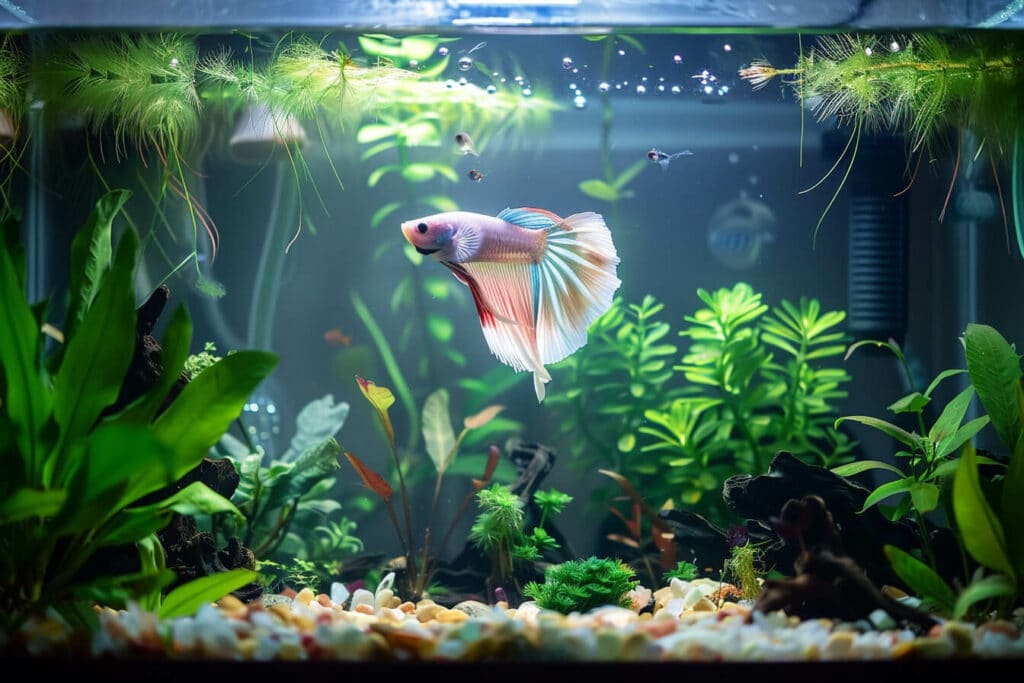
The Best Nitrate Tester Kit for Betta Fish
The Best Nitrate Tester Kit for Betta Fish When diving into the world of betta
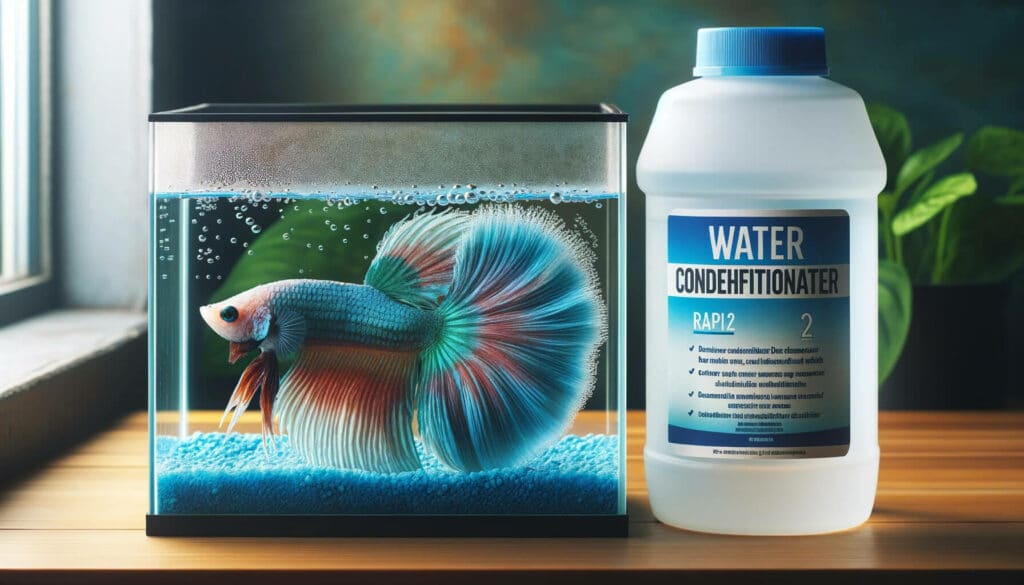
Best Aquarium Water Conditioners For Betta Fish Compared & Reviewed 2024
2024’s Best Aquarium Water Conditioners For Betta Fish Dive into our comprehensive reviews of the
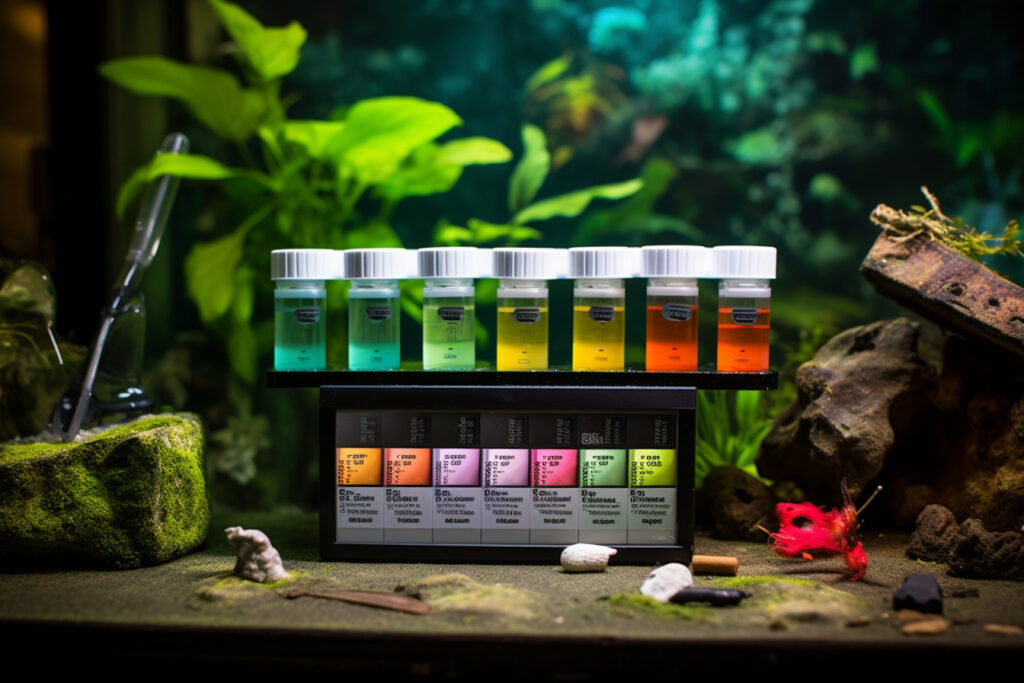
The Best Fish Tank pH Tester in 2024 for Betta Fish
2024’s Best Fish Tank pH Tester for Bettas Are you trying to Find a Reliable


